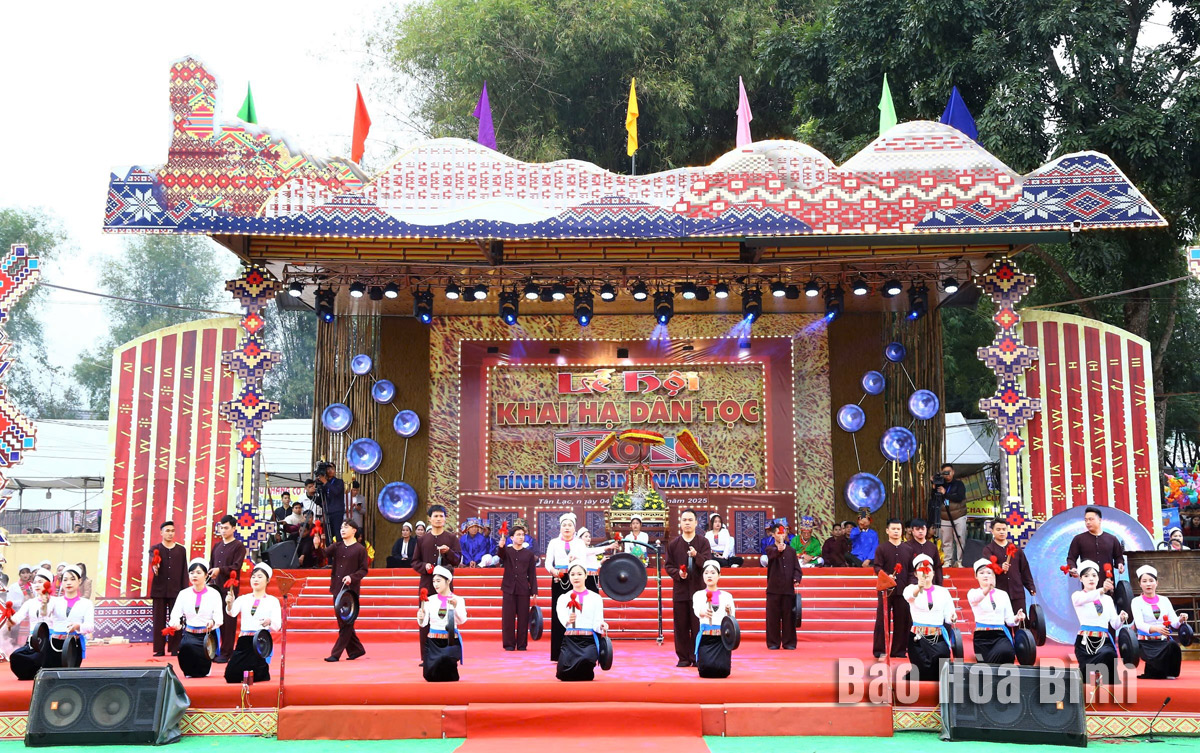
As Hoa Binh province is set to host 115 spring festivals, local departments, sectors and localities are joining hands to ensure safety for the events.

The Khai Ha (going
down to the field) festival is organised to preserve and promote local cultural
values while developing tourism.
The
northern mountainous province, known for its diverse folk festivals, held two
provincial-level festivals, namely Tien Pagoda festival on the fourth day of
the Lunar New Year in Lac Thuy district, and the Khai ha (going down to the
field) festival on the 8th day of the Lunar New Year in Tan Lac district. There
are eight district- or city-level festivals and 56 communal-or ward-level
festivals while 49 are held at the village level.
According
to Deputy Director of the provincial Department of Culture, Sports and Tourism
Luu Huy Linh, the department has asked district and city authorities to ensure
the festivals are organised properly, maintaining traditional values while
promoting safety and efficiency.
The
festivals’ organising boards have been requested to raise public awareness to
prevent wasteful practices like burning of votive papers which could affect the
environment as well as fire and explosion prevention work. Besides, they have
been urged to enhance inspections and supervisions to prevent gambling and
superstitious activities, while settling violations regarding fire prevention
and control, social order, and other related laws in a timely manner.
Hoa
Binh authorities are calling on both local people and tourists to participate
responsibly and adhere to the State’s regulations on festival organisation
since the success of these events relies heavily on community cooperation.
With an increasingly vibrant and widespread emulation movement aimed at building cultured residential areas and cultured families, Yen Thuy District has been making steady progress toward improving both the material and spiritual well-being of its people, while fostering a civilized, prosperous, beautiful, and progressive community.
Once lacking recreational spaces and community facilities, Residential Group 2 in Quynh Lam Ward (Hoa Binh City) has recently received attention for the construction of a new, spacious, and fully equipped cultural house. The project followed the model of state support combined with public contributions in both labor and funding.
The "All people unite to build cultural life" movement, which has been effectively integrated with Kim Boi district’s socio-economic development goals, is fostering a lively spirit of emulation across local residential areas, hamlets, villages, public agencies, and enterprises. In addition, through the initiative, traditional cultural values are being preserved and promoted, while community solidarity and mutual support in poverty reduction and economic development are being strengthened.
A working delegation of the Hoa Binh provincial People’s Committee led by its Permanent Vice Chairman Nguyen Van Toan on June 11 inspected the progress of a project to build the Mo Muong Cultural Heritage Conservation Space linked to tourism services in Hop Phong commune, Cao Phong district.
Born and growing in the heroic land of Muong Dong, Dinh Thi Kieu Dung, a resident in Bo town of Kim Boi district, in her childhood was nurtured by the sweet lullabies of her grandmother and mother. These melodies deeply imprinted on her soul, becoming an inseparable part of her love for her ethnic group's culture. For over 20 years, this love for her hometown has driven Dung to research, collect, and pass down the cultural values of the Muong people to future generations.
In the final days of May, the Ethnic Art Troupe of Hoa Binh Province organized performances to serve the people in remote, mountainous, and particularly disadvantaged areas within the province. These were not just ordinary artistic shows, but they were the meaningful journeys aimed at spreading cultural values, enhancing the spiritual life of the people and contributing to the preservation of ethnic minority cultural identities.



